Social Media Evolution
From Engage until now
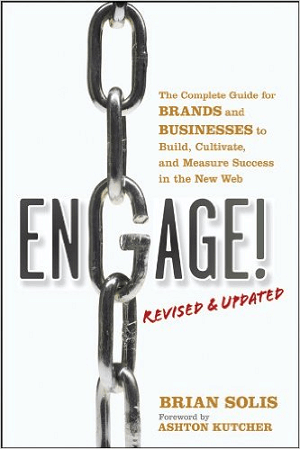
Engage by Brian Solis.
Brian recalls that in the late 90s and early 2000s, he helped with development around what became social media and realized that two-way digital marketing aspect was going to be phenomenal.
He says his book Engage was the culmination of all that work put into a book designed to help anyone in marketing or business really understand how to become social.
After Engage, Brian says, the world started to change and technology started to accelerate. This is something he studies as both an analyst and an anthropologist.
Brian has continued to write books, do research and speak on how to bridge the world of brand or business with technology and people. He says social has become part of that process, as has mobile and digital transformation, wearables, etc.
When asked about major changes in social media that have taken place between his first book and today, Brian talks about creating an infographic called The Wheel of Disruption while he was writing What’s the Future of Business? The infographic showed all of the things that were disrupting industries, with an emphasis on brand, marketing and engagement.
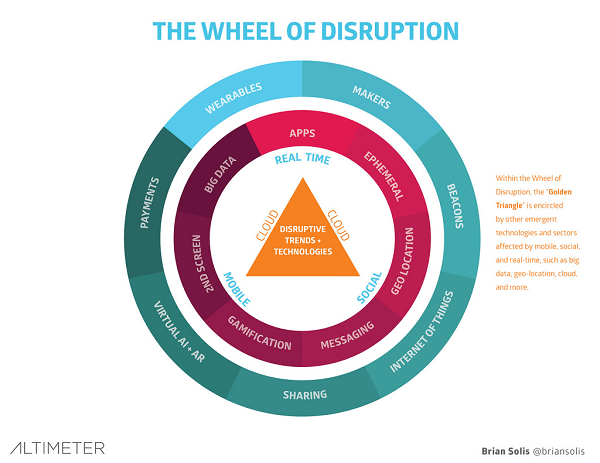
Brian Solis's Wheel of Disruption
He explains that then and now, the three things Fred Wilson once called The Golden Triangle are at the core of everything.
Brian goes on to discuss how wearables, augmented reality and services like Uber,Instacart, Postmates, Amazon, Drone Delivery and Google Express are creating disruption not only on technology fronts, but also on behavioral and expectation fronts at a human level.
Listen to the show to hear Brian explain how the disruption happening today has grand implications for every business in every industry.
The importance of experience

X by Brian Solis.
Brian shares that while many marketers, brand strategists and executives say experience is one of the most important things to deliver, that means different things to different people. From great customer service to great product design, it’s all over the map.
Brian believes that everything that happens when you buy, use, shop for or have a problem with something are moments that contribute to the overall experience.
Brian shares why he thinks we should be able to define and design experiences as part of business and branding to build better relationships, and why he believes experience is the next competitive advantage.
He says that while some savvy organizations have introduced efforts to define a brand experience (BX), a customer experience (CX) and a user experience (UX), all of these efforts are disparate. Thus, by default or by design, the experience is disconnected.
Listen to the show to hear why Brian wants to bring all experiences under one banner of X, where everything works together.
Businesses doing a great job with experience
Brian explains that he chose the companies he talks about in his book not because they are examples of holistic experiences, but because they each contribute moments of truth that when combined, show what a holistic experience would look like.
He shares how Disney created an intentional experience around Snow White and how Steve Jobs was meticulous about designing a connected ecosystem in terms of experience forApple.
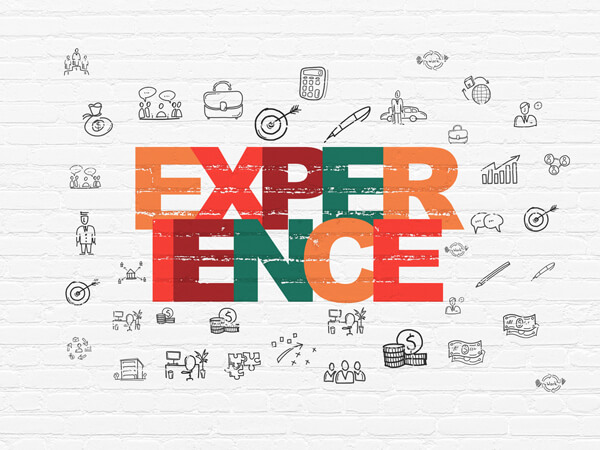
Experience is all-encompassing. Image: Shutterstock.
He talks about Telstra for stitching together digital and physical for better customer experiences. Brian also discusses how LEGO hired anthropology consultancy ReD to study the behavior of their customers, then re-imagined their entire business to cater to the people they were hoping to reach.
He points out that what each of these companies share is a human-centered approach to their products, marketing and service.
Brian goes on to share the example of Disney’s MagicBands. To the user it’s just a seamless device they wear to get into the park, pay for food and open their hotel door. It’s also one of the most beautiful strategies for insight- and data-gathering, Brian says.
Listen to the show to hear more about how Disney uses the data from MagicBands to improve experience.
Moments of Truth
Brian says that when you think about marketing as engagement, meaning a moment of truth in which you can take someone’s attention and give them your attention, you have the opportunity to do something that’s not only productive and useful, but also great.

Image: Shutterstock.
Marketers can make the most of each moment.
The future of business, he says, is in optimizing the four Moments of Truth.
The Zero Moment of Truth, the discovery process, occurs when someone wants to know something. Online, they use Google search, social networks, review sites, etc., to learn more about what they’re searching for. In the Zero Moment of Truth, businesses want to engage and hand-hold someone to the next step.
The First Moment of Truth is when people have included you (the business or brand) in their final decision process. This is where the marketing, packaging or presentation line up and customers buy your product.
The Second Moment of Truth happens after someone has whatever they purchased. Is the customer happy? Do they contact customer support because they need something? Are they looking for alternative ways to use the product?
Finally, there’s the Ultimate Moment of Truth when the customer’s overall experience is evaluated as bad, inconsequential or fabulous. Whatever it is, that experience is going to be shared, whether it comes back in a survey, on Amazon or on a social network.
Brian explains that if you compare each customer’s Ultimate Moment of Truth to your brand promise, you’ll see either great alignment or a disconnect. Disconnects help you understand where to make improvements, enhancements or corrections.
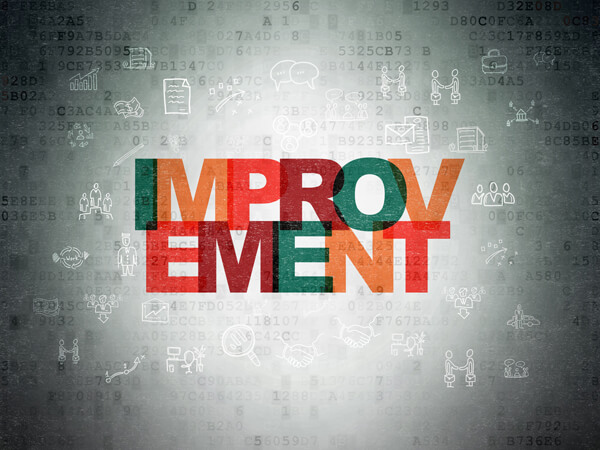
Use the data from disconnects to make improvements. Image: Shutterstock.
Someone’s Ultimate Moment of Truth (what they share) becomes the next person’s Zero Moment of Truth, so these four Moments of Truth are more important than ever.
Brian explains that people share bad experiences most often and why marketers need to get into the business of positive reinforcement to reward those who share positive experiences.
When asked for an example, Brian shared the story of a United Kingdom cell phone provider that didn’t have enough staff to support customers. They rewarded customers who answered people’s questions on Twitter and other social networks with free minutes or data and response time was lowered to a minute or two. This created a community of people helping people that ultimately became the company’s brand experience.
Brian says Digital Darwinism, the notion that technology and society are going to evolve, is a common theme in all of his books. You have a choice: do nothing, compete for the moment (keep up with trends) or compete for the future. Businesses who want to survive need to look at how these trends are playing out over time, how people’s expectations and behaviors are evolving and get in front of it.
That’s the whole point of X, Brian says: design experiences that become meaningful, significant and shareable, and the people you embrace become your community, your salesforce and your customer service. They become everything.
Listen to the show to discover how Brian’s last two books are meant to work together.
Thoughts on emerging platforms
Brian says 2016 will be the year of live video and the smartest marketers are really starting to understand it. Folks like Joel Comm and Brian Fanzo aren’t just building their own communities, they’re also demonstrating to marketers what’s possible with these channels.
In X, Brian uses the term mediumism, which he defines as placing an inordinate value on any of the new channels without thinking about how to add value to it and really understanding the culture of the people within each one of those networks.
He says the emergence of live video represents both a challenge and an opportunity for marketers to really connect with people in ways that are intuitive and natural.
Listen to the show to hear what Brian thinks live streaming means for the future of entertainment.
Immersive technologies
Brian says Facebook is already experimenting with Facebook 360 and shares that there are also incredible 360 orb cameras that are capturing things in real time. All it takes, he explains, is a video architect to stitch them together into new worlds and new experiences.
He believes we’re only scratching the surface of what’s possible.
Brian explains virtual reality, 360 and immersive video make it easy to understand why what he calls experience architecture is important. He says none of these products will be amazing unless you can immerse yourself in something that’s incredible.
He goes on to share a suggestion he made to the manager of Radiohead for including an Oculus Rift experience in the release of their new album.
Brian discusses the idea that social networks are evolving to become the center of our consumption and entertainment, and why these networks have to continue to evolve.
When considering the future, Brian says there are three different kinds of impact: iteration (doing the same things better), innovation (doing new things in new ways) and disruption (doing new things in new ways that make the old ways obsolete). There are people who spend every day thinking about those three things, and that’s why he believes the next big disruption is going to come from some future Mark Zuckerberg.
This is a great time for iteration, innovation and disruption, Brian says, but we have to be prepared; you will either disrupt or be disrupted.
Listen to the show to learn why Brian wants big businesses to think like startups.
Discovery of the Week
While Instagram is first and foremost about images, it’s secondarily about the hashtags in terms of being found and finding others.
Grama is a free iOS app that helps you find Instagram hashtags related to hashtags you already use.
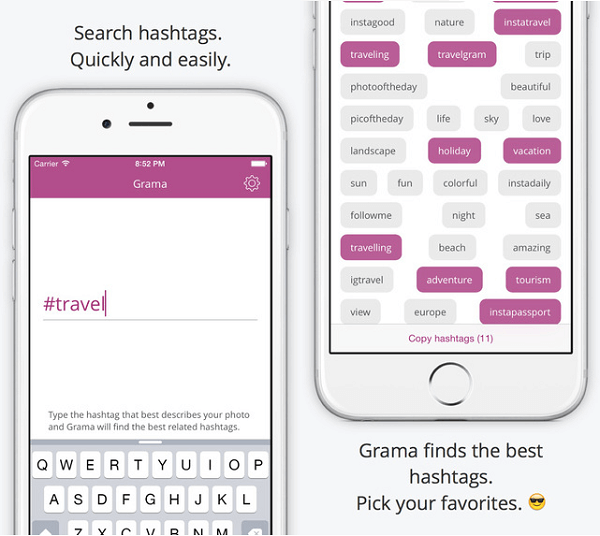
The Grama app helps you find relevant hashtags.
Type in your hashtag and the app brings up a wall of related hashtags. For example, if I type in #travel, the app will give me tags such as instatravel, travelgram, vacation and traveling. Then you simply tap on any of the tags you want and Grama will export them to your clipboard so you can jump back into Instagram and use them.
To view the original article Click Here

No comments:
Post a Comment